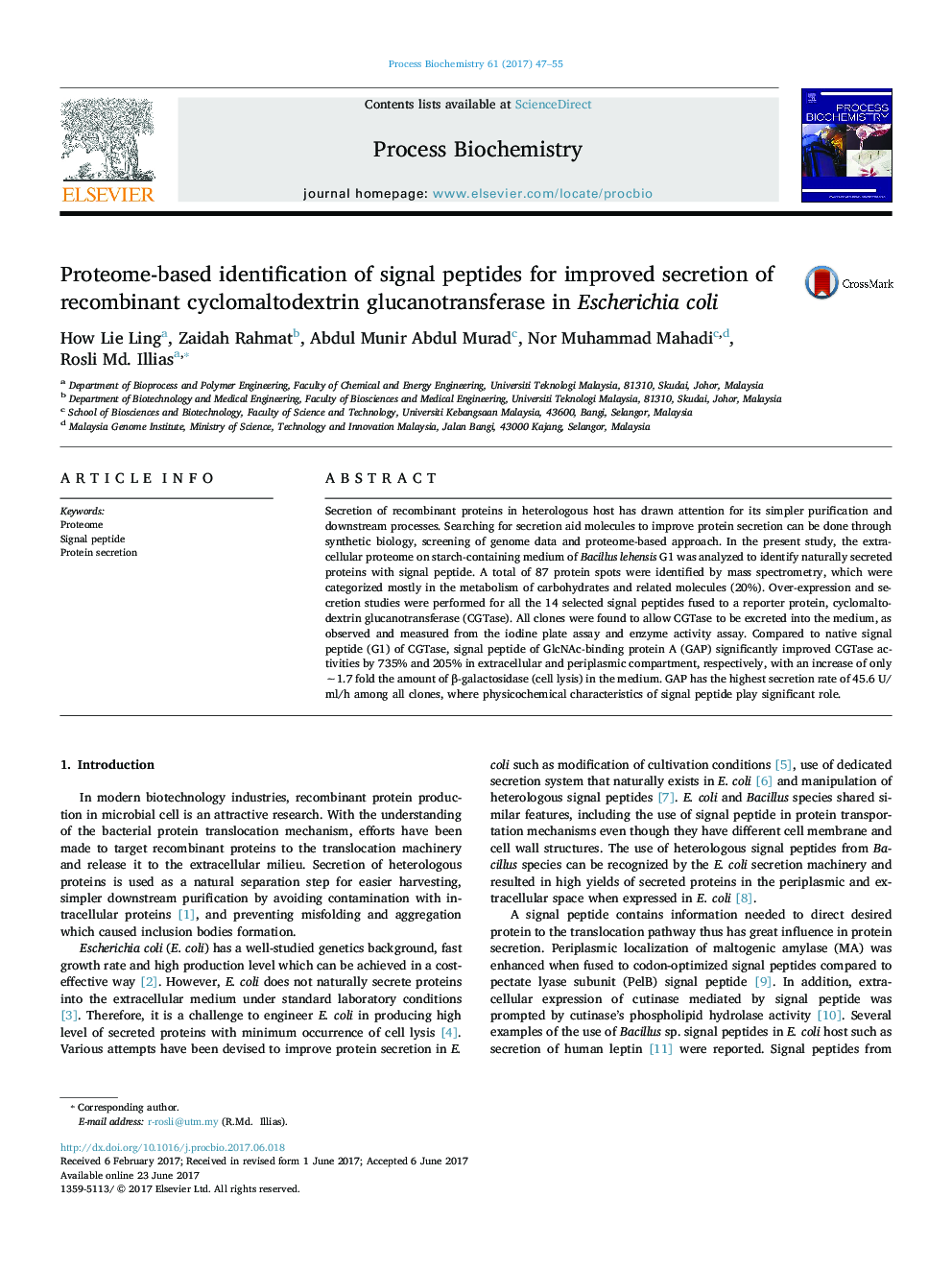| Article ID | Journal | Published Year | Pages | File Type |
|---|---|---|---|---|
| 6452901 | Process Biochemistry | 2017 | 9 Pages |
â¢Proteome-based approach for finding potential signal peptides for extracellular CGTase production in E. coli.â¢Secretion of CGTase triggered by fusion to the signal peptide from B. lehensis G1.â¢High secretion rate was showed by GlcNAc-binding protein A signal peptide.â¢Improving protein excretion is a way for high level production with low cost.
Secretion of recombinant proteins in heterologous host has drawn attention for its simpler purification and downstream processes. Searching for secretion aid molecules to improve protein secretion can be done through synthetic biology, screening of genome data and proteome-based approach. In the present study, the extracellular proteome on starch-containing medium of Bacillus lehensis G1 was analyzed to identify naturally secreted proteins with signal peptide. A total of 87 protein spots were identified by mass spectrometry, which were categorized mostly in the metabolism of carbohydrates and related molecules (20%). Over-expression and secretion studies were performed for all the 14 selected signal peptides fused to a reporter protein, cyclomaltodextrin glucanotransferase (CGTase). All clones were found to allow CGTase to be excreted into the medium, as observed and measured from the iodine plate assay and enzyme activity assay. Compared to native signal peptide (G1) of CGTase, signal peptide of GlcNAc-binding protein A (GAP) significantly improved CGTase activities by 735% and 205% in extracellular and periplasmic compartment, respectively, with an increase of only â¼1.7 fold the amount of β-galactosidase (cell lysis) in the medium. GAP has the highest secretion rate of 45.6 U/ml/h among all clones, where physicochemical characteristics of signal peptide play significant role.
Graphical abstractDownload high-res image (145KB)Download full-size image
